 |
 |
Fact Sheet: Iran's Submarine Force
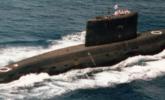
The Iranian military has acquired a large, capable, and growing submarine force. Industrial developments in Iran in the last month have increased the readiness and lethality of the Iranian submarine force. This fact sheet provides a brief analysis of the Iranian submarine fleet and its potential future capabilities.
Tactical Advantage of Submarines in the Arabian Gulf
Submarines are a significant measure of naval combat power. Because submarines are difficult to detect and track, unlike surface ships or aircraft, they have a strategic advantage that distinguishes elite naval powers. In the confined and shallow waters of the Arabian Gulf, the ability to deploy submarines effectively threatens surface vessels that are channeled into narrow Sea Lines of Communication (the technical term for shipping lanes) by depth, underwater obstacles, oil and gas wells, and territorial boundaries. Because these Lines of Communication force commercial and military vessels to travel defined and predictable routes with minimal deviation, submarines can easily ambush surface traffic in the Arabian Gulf, especially in the Strait of Hormuz where a Traffic Separation Scheme clearly delineates a shipping lane that ships must comply with.1
In contrast to the US Navy, which uses nuclear submarines, the Iranian Navy uses diesel electric submarines. While diesel submarines have limited range, they are virtually undetectable unless they are moving. Diesel electric submarines lying in wait to execute an ambush have a tactical advantage against the ships they target and ships that target them.2 Advantageous positions from which a submarine might attack channeled surface vessels are abundant within the boundaries of Iran’s territorial waters, which mean they are capable of executing a first strike from a protected position.
Iran not only possesses a strategically significant submarine capability, but it has also demonstrated the ability to fashion its own submarine technology and execute substantive repairs to the Soviet Kilo class submarines within its fleet, which are approaching twenty years of service with Iran.3 The ability of Iran to accomplish complex overhauls of its Soviet era submarines through the Iran Shipbuilding & Offshore Industries Complex (ISOICO) in Bandar Abbas will significantly extend the lifespan of these large submarines.4
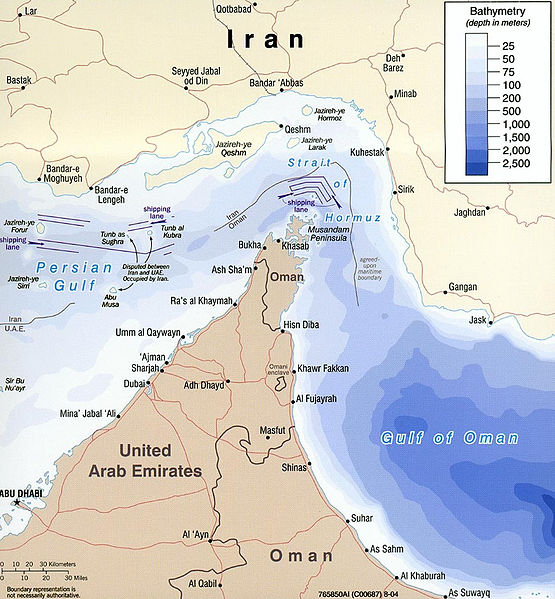
Strait of Hormuz showing confined shipping lanes (Wikimedia Commons)
Why Iran’s Submarine Force Matters
Taken as a whole, Iran’s military has a limited ability to project power against the Arab states of the Gulf Cooperation Council (GCC), located on the western and southern edges of the Arabian Gulf. In particular, the Iranian Air Force is limited in size and quality and is primarily comprised of U.S. aircraft purchased in the 1970s, including F-4, F-5, and F-14 models, as well as a few older models of the Russian MIG-29.5 While these aircraft can still fly, they are old, require a lot of maintenance, and are not capable of sustained combat operations.
In contrast, the GCC states—Bahrain, Kuwait, Oman, Qatar, Saudi Arabia, and the United Arab Emirates—have equipped their militaries with modern fighter aircraft, including F-15, F-16, and F-18 models, as well as modern European aircraft including the Eurofighter Typhoon.6
Because of this regional disadvantage, Iran’s best military option against the GCC exists at sea. None of the GCC states have submarines, leaving Iran as the only regional power with a submarine force.7 Iran’s submarine force, equipped with torpedoes, cruise missiles, and mines, represents a significant threat to the free flow of commercial shipping through the Strait of Hormuz. Commercial vessels traveling through the Strait of Hormuz are a strategic target, as oil exports through the Strait are the financial lifeline for the GCC. In this sense, commercial shipping vessels are better targets for Iran than GCC or U.S. warships. More importantly, the ability to threaten all surface traffic through the Strait provides Iran the ability to build an effective blockade. Iranian leaders have publicly stated that they are prepared to close the Strait of Hormuz to deny GCC states oil revenues. In December 2011, Ahmad Alam Al-Hoda, a member of the Iranian Assembly of Experts, said, “Do not doubt that Iran has the capability to blockade the UAE and Saudi tankers departing for Europe via the Strait of Hormuz.”8
Recent Industrial Base Developments
Iran’s submarine capability also signifies the degree of sophistication of their military industrial base. Iran can manufacture a wide array of ships, ranging in size from small patrol boats to long range destroyers. Submarines are more difficult to manufacture and repair than surface ships, and recent developments confirm that Iran possesses this capability. The Iranian industrial base is producing small submarines at a rate of four to five per year, and in May 2012 completed the complex overhaul of the Kilo class submarine “Tareq.” This is the first time Iran has completed a complex overhaul of a large submarine, and it is a precursor to producing large submarines.9 This new capability to produce and repair large submarines reflects a military industrial base that is growing in power and has not been weakened by ongoing sanctions.
Iranian Submarine Force Types, Numbers, and Capabilities
Iran has acquired a fleet of approximately twenty-four submarines, ranging in size from the 4,000-ton displacement Kilo class submarines to the 150-ton displacement Ghadir class mini submarines.
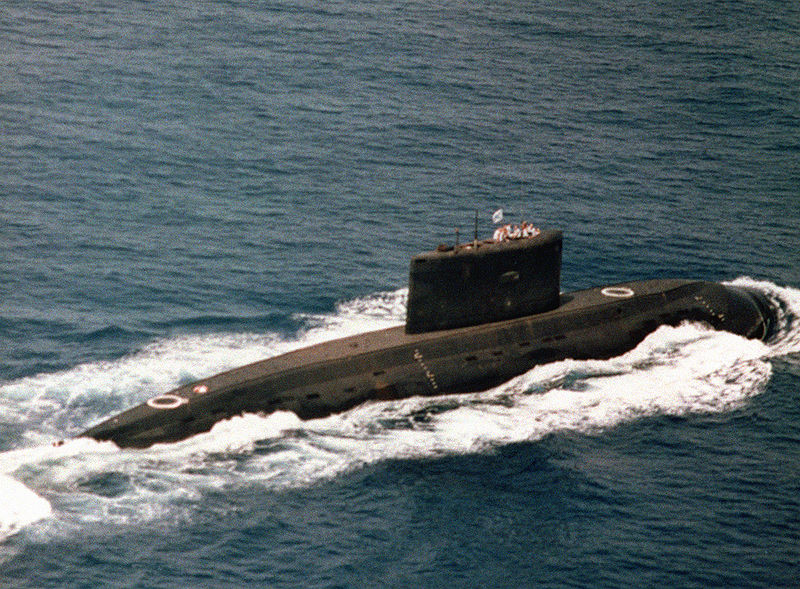
Iranian Kilo Class Submarine (Wikimedia Commons)
Kilo Class Submarines (three in service)10
- Russian design and manufacture
- 4,000-ton displacement
- Entered service in Iranian Navy in 1992
- Capable of short-range deployments near Iranian ports in the Arabian Gulf and Arabian Sea, as well as long distance deployments to Gulf of Oman, Red Sea, or Indian Ocean
- Capable of firing large torpedoes and surface-to-surface missiles, and laying mines
- Relatively easy to detect and track due to large size and acoustic signature
- Can only be stationed at deep water ports due to size and support requirements
Qaeem Class Submarines (in development)11
- Iranian design and manufacture (influenced by Russian Amur 950 class)
- 1,000-ton displacement
- Will enter service in 2013
- Capable of short-range deployments near Iranian ports in the Arabian Gulf and Gulf of Oman, as well as long-distance deployments to Gulf of Oman, Red Sea, or Indian Ocean
- Capable of firing large torpedoes, surface-to-surface missiles, and laying mines
- This class will be largest submarine Iran has built
Fateh Class Submarine (one in service)12
- Iranian design and manufacture
- 600-ton displacement
- Entered service in 2011
- Single prototype to validate Iranian ability to design and manufacture larger submarines than Nahang class
- Increase in size over Nahang class indicates ongoing advancements in Iranian military-industrial capabilities
- Capable of firing large torpedoes, surface-to-surface missiles, and laying mines
Nahang Class Submarine (one in service)13
- Iranian design and manufacture
- 400-ton displacement
- Entered service in 2006
- Single prototype to validate Iranian ability to design and manufacture larger submarines than Ghadir class
- Increase in size over Ghadir class indicates advancements in Iranian military-industrial capabilities
- Capable of firing large torpedoes, surface-to-surface missiles, and laying mines
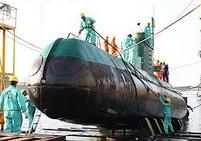
Iranian Ghadir Class Submarine (Wikimedia Commons)
Ghadir Class Submarines (approximately nineteen in service)14
- Iranian design and manufacture
- Derivative of North Korean Yugo and Sango class submarines
- 150-ton displacement
- Entered service in 2007
- Optimized for short range Arabian Gulf operations
- 50-day at sea endurance
- Capable of firing the same large torpedoes and mines as the Kilo, just fewer of them
- Due to small size and acoustic signature, relatively difficult to detect and track
- Due to large numbers, can be widely proliferated on the entire Iranian coast
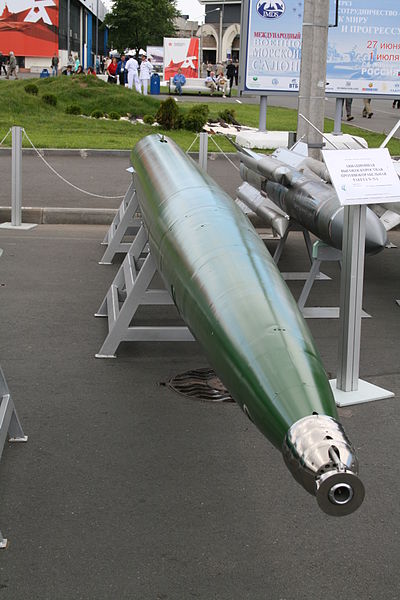
Russian “Shkval” Torpedo, Basis For Iranian “Hoot” Torpedo
Iranian Submarine Weapons15
- 533-millimeter torpedoes based on Russian/Chinese designs
- Short-range surface-to-surface missiles including the Thaqeb
- The Hoot supercavitating torpedo, based on Russian Shkval
- The EM-50 series of maritime mines, based on Chinese designs
- All of these weapons are a threat to both commercial and military vessels
Conclusion
Iran has a large, capable, and growing submarine fleet that constitutes a credible threat to military and commercial shipping in the Arabian Gulf. The recently demonstrated ability of the Iranian military industrial complex to repair large submarines and manufacture small submarines at the rate of several per year indicates that sanctions are not restricting Iran’s ability to produce a full spectrum of ships and weapons. The ability of the Iranian arms industry to obtain, reverse engineer, and manufacture submarine weapons of Russian / Chinese origin means the Iranian submarine fleet will be well equipped with effective weapons that will not be restricted by embargoes or sanctions.
NOTES
1 Walter Posch and Sasha Albrecht, “Sabre Rattling in the Persian Gulf,” German Institute for International and Security Affairs, April 2012.
2 Scott Charney, “The Undersea World of Ali Khamenei,” Foreign Policy in Focus, April 9, 2012.
3 Walter Hickey, “Iran Is Far More Capable Of Stealth Naval Warfare Than Most Ever Imagined”, Business Insider Military and Defense, May 31, 2012.
4 “Iran Finishes Overhaul on Tareq (Kilo SSK),” May 29, 2012, Open Source Imagery & Geospatial Intelligence, http://osgeoint.blogspot.com/2012/05/iran-finishes-overhaul-on-tareq-kilo.html
5 Anthony Cordesman, “The Conventional Military,” The United States Institute of Peace Iran Primer, June 12, 2012.
6 Rex Wingerter, “Iran: Outgunned In The Gulf,” Eurasia Review News and Analysis, February 18, 2012.
7 Scott Charney, “The Undersea World of Ali Khamenei,” Foreign Policy in Focus, April 9, 2012.
8 “Senior Iranian Officials: Close Straits, Attack U.S. and Gulf Targets,” The Middle East Media Research Institute, February 01 2012.
9 Walter Hickey, “Iran Is Far More Capable Of Stealth Naval Warfare Than Most Ever Imagined,” Business Insider Military and Defense, May 31, 2012.
10 “Iran’s Naval Forces,” Office of Naval Intelligence, Fall 2009.
11 “Iran Building New 1,000 ton Subs,” Seapower International, November 2008.
12 “Iran To Unveil New Submarine,” FARS News, October 05, 2011, http://english.farsnews.com/newstext.php?nn=9007130034.
13 “Nahang Class Submarine,” Globalsecurity.org, June 12, 2012, http://www.globalsecurity.org/military/world/iran/nahang.htm.
14 “Ghadir Class Submarine,” Globalsecurity.org, June 12, 2012, http://www.globalsecurity.org/military/world/iran/ghadir.htm.
15 “Submarine Forces (Iran),” Jane’s Underwater Warfare Systems, September 05, 2011.